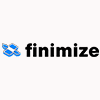Trading strategy
Become a better trader by working through free interactive
courses on IG Academy.
CFDs are complex financial instruments and come with a high risk of losing money rapidly due to leverage. You should consider whether you understand how CFDs work, and whether you can afford to take the high risk of losing your money. CFDs are complex financial instruments and come with a high risk of losing money rapidly due to leverage. You should consider whether you understand how CFDs work, and whether you can afford to take the high risk of losing your money.
Discover five key day trading strategies to help take your intra-day dealing to the next level.

If you take a look at successful traders, you’ll see they all have one thing in common: they develop a trading strategy that they have confidence in. Trading strategies provide control, discipline and a statistical edge.
For day traders, a good trading strategy is even more important, as day trading strategies differ from those of conventional investors – the mantra of buying low and selling high might not always be in a day trader’s best interests.
Instead, most day trading strategies try to take advantage of small market movements. If a market looks likely to fall, they might short it – as long as no position is kept open beyond the end of the trading day.
Here’s a few popular strategies to consider. Or if you’re looking for some advice on how to get started day trading, take a look at our day trading tips.
Trend traders attempt to make money by studying the direction of asset prices, and buying or selling depending on which direction the trend is taking.
If the trend is upwards, and prices are making a succession of higher highs, then traders take a long position by buying. If the trend is downwards, and prices are making a succession of lower lows, then traders take a short position by selling.
Trend trading isn’t exclusively used by day traders. You can keep your position open for as long as the trend continues – or if you are sticking to intra-day dealing, you can close it before the day is over.
Learn which tools investors use for trend trading.

Swing trading is all about taking advantage of short-term price patterns, based on the assumption that prices never go in one direction in a trend. Instead, swing traders look to make money from both the up and down movements that occur in a shorter time frame.
While trend traders seek to take advantage of long-term market trends, swing traders tend to be more interested in the small reversals in a market’s price movement. They attempt to spot these reversals ahead of time, and trade to make profits from smaller market moves.

Scalping is a short-term trading style that takes small but frequent profits – focused on achieving a high win rate. The theory is that you can just as easily build a big trading account by taking smaller profits time and time again as you can by doing fewer trades and letting profits run. Scalping requires a very strict exit strategy as losses can very quickly counteract the profits.
Most scalpers will close positions before the end of the day, because the smaller profit margins from each trade will quickly get eroded by overnight funding charges. So it can be popular among day traders.

Become a better trader by working through free interactive
courses on IG Academy.
Mean reversion is based on the theory that prices, and indeed other measures of value like price-to-earnings (P/E) ratios, always eventually move back towards the historical mean.
The strategy uses statistical analysis, such as moving averages, to catch assets whose recent performance has differed considerably from their historical average. Mean reversion traders will then take advantage of the return back to their understood state.

The money flow indicator signals whether an asset might be oversold or overbought – using volume and price rather than the asset’s price alone.
It works by comparing the number of trades from the previous day to the current day, to determine whether the money flow was positive or negative. A reading of 80 or higher indicates overbought conditions, and is a signal for the trader to sell. Whereas a reading of 20 or below indicates oversold conditions and is a signal to buy.

This information has been prepared by IG, a trading name of IG Limited. In addition to the disclaimer below, the material on this page does not contain a record of our trading prices, or an offer of, or solicitation for, a transaction in any financial instrument. IG accepts no responsibility for any use that may be made of these comments and for any consequences that result. No representation or warranty is given as to the accuracy or completeness of this information. Consequently any person acting on it does so entirely at their own risk. Any research provided does not have regard to the specific investment objectives, financial situation and needs of any specific person who may receive it. It has not been prepared in accordance with legal requirements designed to promote the independence of investment research and as such is considered to be a marketing communication. Although we are not specifically constrained from dealing ahead of our recommendations we do not seek to take advantage of them before they are provided to our clients.
CFDs are a leveraged products. CFD trading may not be suitable for everyone and can result in losses that exceed your initial deposit, so please ensure that you fully understand the risks involved.





























































